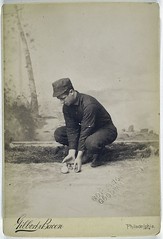 |
| Photo: Chakra-Jnana Yoga/Facebook |
1. Convenience. You can do this exercise anywhere to treat or prevent low back pain. It does not require equipment or even lying down. While there are various forms of back extension (lying on your tummy and pressing up onto forearms or hands, lying on your back and lifting your hips into a bridging position, various yoga poses, etc), this exercise is the easiest one to perform no matter where you are.
2. Back Extension Exercise helps 70% of patients with Low Back Pain. Moving your lower spine into a backward-bent position (arched) is one of the most effective ways to undo the force of continual forward bending and slumping that we all perform excessively every day.
3. Back Extension treats Low Back Injury which occurred in a flexed (forward bent) position. If you have Low Back Pain which began with a specific injury or traumatic event, think about the position of your back at that time. Were you lifting something? Bending forward to pick up an object? If forward movement caused your injury, back extension may be the direction of exercise to treat it. Even if you were injured in another way, this still is the direction of force that the majority of patients with low back pain need in order to minimize symptoms.
Caution: This exercise is not safe or appropriate for all individuals, so consult your physician first, especially if you have low back problems, painful medical conditions, balance problems, or anything else that may inhibit your safety. If performed in a gentle way, it is likely safe for most individuals without low back pain. No one should perform this forcefully or into an excessively far backwards position.
If you have low back issues and have not seen a Physical Therapist, ask your doctor for a referral/prescription, and find a spine PT near you!
Reference: McKenzie, Robin. Mechanical Diagnosis & Therapy: Lumbar Spine. 2009: The McKenzie Institute International, Part A.
Further reading: McKenzie, Robin. Treat Your Own Back, 9th ed. 2011: OPTP.






